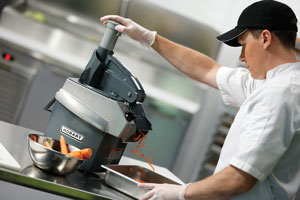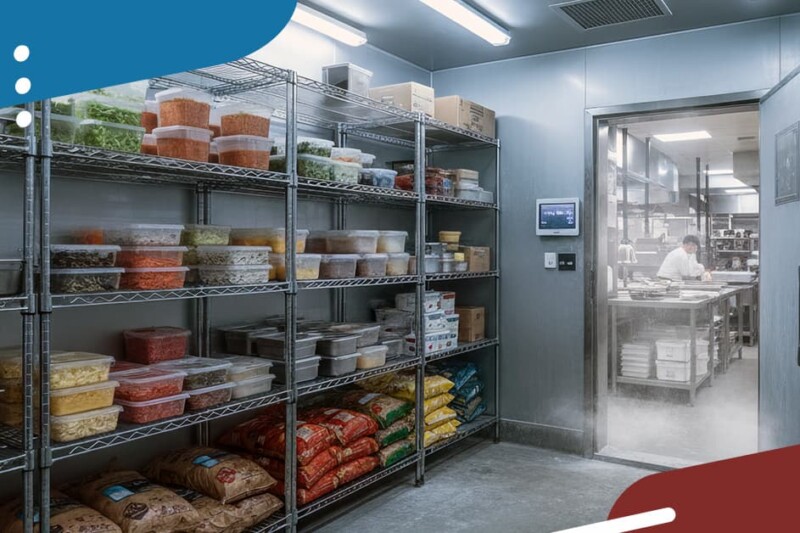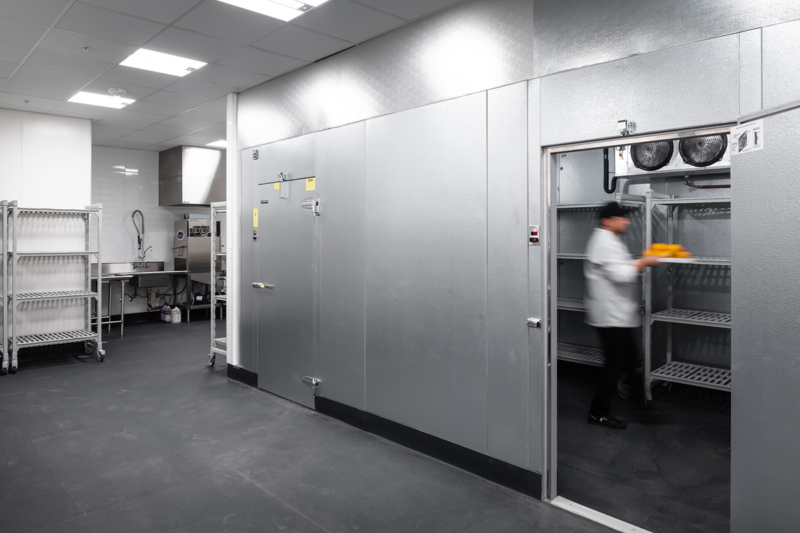Particulars Of Commercial Food Processors

Nothing quite equals watching a veteran hand wield a sharp knife as it chops, dices and juliennes vegetables. But when you’re feeding as many people as you do, day in and day out, you’re going to need a lot of skilled employees, a lot of time and a whole lot of counter space to cut all the goods by hand. The better choice is a food processor for speed, quantity, consistency and footprint.
Two types of commercial food processors are most common: batch bowl and continuous feed. A third version combines the two for the ultimate versatility.
Commercial batch bowl processors are most similar to residential food processors: you place ingredients into the bowl and the blade does the rest. Two kinds of blades and the position of those blades do different tasks. Processors with S blades that rotate at the bottom of a bowl can grate, chop and puree single ingredients and combine a variety of ingredients into an incorporation or emulsification— think hummus, tapenade, salsa, pesto, butters, mayos, etc.
Batch bowl processors with disc blades position the disc at the top of the bowl. Depending on the disc, the foods fed into the bowl go through the disc first and drop into the bowl sliced, shredded, julienned, grated, diced, waffle cut, wavy cut, brunoised, etc. When you want ingredients cut specifically for presentation, i.e. identifiable, you want a disc-blade machine vs. an S blade. The only disc that will go on the bottom of a bowl is a whipping disc; it sits low like an S blade, but can whip liquids into creams and butter.
Continuous-feed models use the disc blades as well. The difference is that instead of dropping into an integral bowl (with its limited capacity; bowls are typically 3 to 4 qt., but you can get larger) you can continuously feed ingredients into the disc blades and the processed food drops through a chute into whatever storage container you want; size is no limit. Continuous-feed processors turn out hundreds and even thousands of pounds of product an hour for high-volume applications.
With a combination model, you choose whether to use a bowl or let the food exit into another container. The tops of the processor are interchangeable.
Despite there being so many models from a variety of manufacturers, answering three basic questions up front will start you on the path to finding the right model:
1) What ingredients am I processing and for what menu items?
2) How do I need them processed (shredded, sliced, diced, grated, combined, pureed, emulsified, etc.)?
3) What quantities do I need?
By answering these questions, you’ll know whether you need a batch bowl, continuous- feed or combination unit and you’ll know whether you need a light-duty, medium-duty or heavy-duty model. Several factors contribute to the light-, medium- and heavy-duty designation including the motor’s horsepower. The general rule of thumb—but there are exceptions—is that light-duty units’ motors will range between ¾ and 1 hp and medium and heavy duty between 1 and 2 hp. But there are medium-duty units with ¾ hp as well as 3. hp. Also contributing to the “duty level”: construction of the processor and the material of the blades.
Variable One: Blades
S blades are most commonly made of stainless and most often have serrated edges. Most have two curved blades, but you can ask about versions with three and even four blades.
Disc blades are typically stainless and they’re embedded in the discs, which are most often made of aluminum. Some manufacturers offer stainless discs to house the stainless blades. Stainless discs are more expensive than aluminum but they’re dishwasher safe; aluminum discs can discolor when exposed to dishwasher chemicals. That discoloration doesn’t affect performance, however, but if you want to keep them looking sharp, manufacturers recommend washing them in warm soapy water.
Each type of blade function has many sizes for your specific needs. For example, one manufacturer offers seven different slicing discs, with widths ranging from 1 mm in thickness to 10 mm. The same manufacturer offers six crinkle cut discs, five dicing discs and three sizes of French fry cutters. Want a variety of slicing sizes without sorting through a bunch of discs? Another manufacturer offers an adjustable slicing blade that will slice your ingredients in thicknesses from 1 to 6 mm.
Food processor makers stress that there is no specific right-or-wrong disc for your operation. Talk through your particular needs and concerns with your sales rep and narrow the selection down to one or two for a specific task. Most makers have guides that clearly show the result of each blade style.
Variable Two: Speed, Size
Blade rpms play an important part in the selection process, based both on the ingredient being processed and whether you’re shredding, dicing, emulsifying or another function. When using S blades in the bottom of the bowl to chop, mix and emulsify, the blade spins at high speeds in thousands of rpms. When using blades at the top of the bowl to slice, cube and dice, the spin rate is much slower, typically in the hundreds of rpms. Speeds are determined by both the function of the task as well as the specific food being processed.
Many manufacturers recommend slower speeds between 300 and 450 rpm for slicing and dicing vegetables. Too fast of a spin can crush tomatoes and lose nutrients. Slower speeds help keep cell structure intact and keep veggies from oxidizing and turning brown too quickly. Even with small quantities, cutting tomatoes in a food processor minimizes the chance of too much pressure from a dull knife and resulting moisture loss.
Emulsifying, pureeing and whipping require speeds as high as 3,000 rpm. Because chickpeas are tough beans, hummus needs high-speed processing to prevent graininess.
If you process lots of liquid foods, consider a machine with a bowl designed with a removable gasket at the top that prevents any spill over.
Variable-speed machines give you the option to slow down or speed up depending on the fiber and water content of your ingredients. One manufacturer recommends 450 rpm for slicing and dicing veggies, 800 rpm for harder ingredients such as potatoes and hard cheese, 1,450 rpm for parsley and pesto ingredients and 2,650 rpm for salad dressings and emulsifications such as flavored mayos.
Single-speed models are ideal for operations that process the same ingredients day in and day out. They also leave guesswork out of food processing.
Safety Is A Constant
Any tool with blades, particularly with spinning blades, are safety concerns in a kitchen. Fortunately, food processors have safety measures built in. Interlocks and microswitches on bowls automatically engage when the bowl is put in place; without engagement, the unit will not turn on.
On continuous-feed machines, pusher handles in the feed pusher port must be in place for the machine to work. The moment the handle is lifted out of the chute, the blade stops spinning.
Additional safety features include thermocouple sensors to shut the machine down and prevent motor overheating, and waterproof control panels and buttons.
With so much variety in food processor uses and sizes, check with your distributor to find the right model.
- TIP: S blades generate heat while they spin. If yeast is one of your ingredients, choose an S blade with three or four blades rather than two. It will process the blend quickly without activating the yeast.
RELATED CONTENT
- Advertisement -
- Advertisement -
- Advertisement -
TRENDING NOW
- Advertisement -
- Advertisement -
- Advertisement -


